Top 10 Slack Alternatives for Community Training in 2026

TL;DR
- What it enables: Community training platforms enable scalable learning experiences with integrated collaboration and engagement tools.
- What it includes: Course creation, progress tracking, AI assistance, chat features, custom branding, and analytics capabilities.
- Key elements: Effortless onboarding, automated reminders, robust security, personalized AI learning, and seamless payment integration.
- Top 10 for 2026 include: Disco, Discord, Microsoft Teams, Chanty, Flock, Twist, Basecamp, Workplace by Meta, Rocket.Chat, Mattermost.
- Why it matters: Transforms traditional training into dynamic, community-driven experiences that foster authentic connections and shared learning.
Why Look Beyond Slack
Slack has proven to be a strong resource for conversations and collaboration, but it wasn’t built with training businesses or large learning communities in mind. When programs need tools to manage learners, deliver content, and track engagement, Slack can quickly show its limitations.
- Lack of learning-specific tools: Slack does not include features like course creation, learner progress tracking, or assessments.
- Challenges with managing large groups: For programs working with bigger cohorts, Slack’s organization tools may feel too limited. There’s no way to easily manage or segment users for tailored experiences.
- Scaling costs for larger teams: As the number of learners grows, Slack’s paid plans can become costly, especially when managing multiple workspaces or adding advanced integrations.
What Matters Most for Community Training
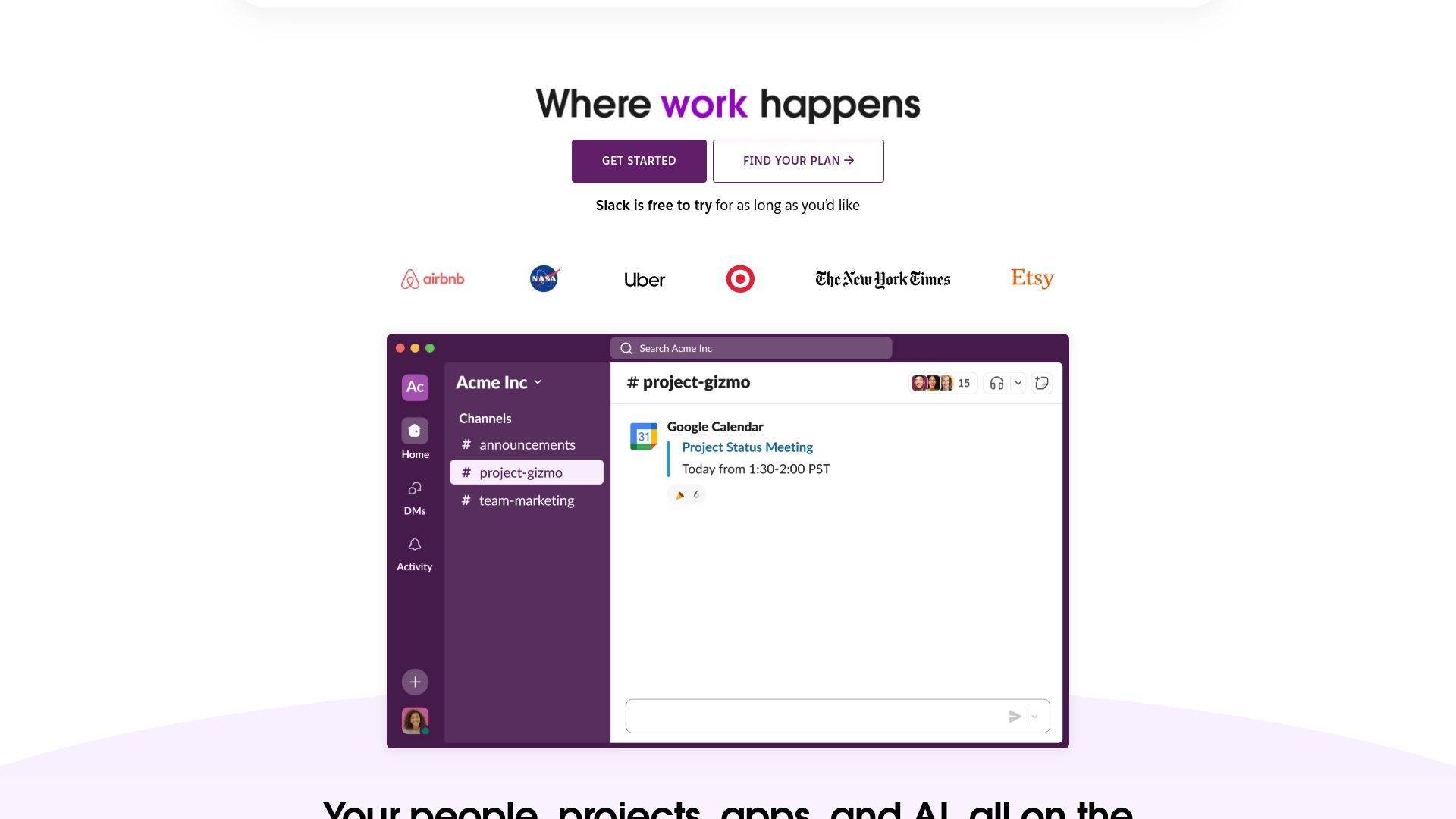
Community training is strongest when it fosters authentic connections and opens channels for shared learning. Platforms like Slack provide a dynamic space for real-time conversations that drive engagement and collaboration. By creating opportunities for deeper discussions and peer-driven support, chat apps are reshaping how training happens in group settings.
To design impactful community training experiences, platforms need to meet a high bar for functionality and adaptability:
- Effortless onboarding: Seamless entry points for members to join and begin participating immediately.
- Custom branding: Tools to align the platform’s design with your organization’s identity and values.
- Automated reminders: Built-in prompts to help learners stay engaged and on track.
- Robust security features: End-to-end data protection and compliance standards to ensure trust.
- Personalized learning through AI: Smart tools that adapt content and communication to individual needs, enhancing relevance and support.
Evaluating Slack for Community Training and Key Considerations for Alternatives
Slack is a robust communication tool widely used for team collaboration, but it lacks the advanced AI and learning-specific features needed for modern community training. Below, we compare Slack's advantages, limitations, and what features to prioritize when exploring alternatives like Disco.
| Slack Advantages | Slack Limitations | Features To Look For When Considering Slack Alternatives |
|---|---|---|
| Trusted and widely recognized collaboration tool | Lacks learning-specific tools like course creation and progress tracking | AI-powered learning tools for personalized experiences |
| Extensive app integrations (2,600+ apps available) | Limited scalability for large cohorts; costs rise with team size | Seamless integration of community and learning features |
| Strong security and compliance certifications | No built-in support for structured learning journeys | Advanced community and learner engagement analytics |
| Real-time communication with channels and threads | Limited customization for branded learning environments | Fully customizable platforms with tailored onboarding |
| Features like Slack AI for smarter collaboration | Cannot unify learning management and community-building effectively | Unified LMS and community management in one platform |
1. Disco

Disco redefines what it means to build and scale transformative learning programs. It’s more than a platform—it’s a space where training businesses can integrate learning, community, and AI into one cohesive experience. By focusing on the intersection of education and connection, Disco ensures that every member of your program feels engaged, supported, and part of something greater.
Best for Unified Learning and Community
Disco balances the needs of educators and learners by combining innovative AI tools with community-focused features. From creating polished courses to fostering meaningful collaboration, it’s a system designed to streamline workflows, enhance engagement, and amplify outcomes.
Key Features
- AI-assisted course creation and learner support: Build tailored programs effortlessly, while providing learners with on-demand AI guidance for deeper understanding.
- Integrated chat for collaboration: Enable seamless communication through channels, threads, and direct messages—perfect for both real-time discussions and asynchronous learning.
- Custom branding and analytics: Maintain a professional, branded look while gaining insights through detailed group analytics to track engagement and progress.
- Seamless payment flows: Simplify revenue generation with built-in tools for memberships, subscriptions, and program fees, all powered by Stripe integration.
Whether you’re launching your first course or expanding an established program, Disco brings clarity and cohesion to every aspect of the learning experience.
2. Discord
Discord has grown from a go-to platform for gamers into a dynamic space for communities of all kinds, including those built around learning and development. Its casual, interactive design makes it a great fit for fostering informal engagement, especially in training environments where open dialogue and collaboration are key.
Best for Voice and Informal Engagement
For programs that need real-time conversations, Discord’s voice and video channels create an environment that feels immediate and engaging. Text channels, organized by topics, allow participants to focus on specific discussions or training modules without overwhelming the broader group. While Discord is free to start and widely accessible, its professional branding capabilities are limited, which may pose challenges for organizations looking for a more polished, customized presence.
Key Features
- Voice and video channels: Enable seamless, real-time interaction that fosters collaborative learning.
- Topic-based text channels: Keep discussions organized and focused, even in large groups.
- Large user base and flexible moderation tools: Easily manage and maintain a supportive, active community.
- Free to start: An accessible option for smaller teams, with premium upgrades like Nitro for enhanced features.
3. Microsoft Teams

Microsoft Teams stands out as a natural extension of the Microsoft ecosystem, seamlessly connecting tools like Outlook, SharePoint, and the Office suite. For training organizations already using Microsoft solutions, it creates a unified platform where communication, document collaboration, and scheduling flow effortlessly.
Best for Enterprise Integration
Microsoft Teams brings together communications and productivity in a way that’s designed for large-scale collaboration. Its ability to streamline workflows while providing deep file sharing and task management makes it an attractive option for training programs that require enterprise-level infrastructure. That said, its complexity and cost may be better suited for organizations with the bandwidth to fully leverage its capabilities.
Key Features
- Generous file storage: Share and organize training materials effortlessly with cloud storage options, even in the free version.
- Built-in calendar and scheduling: Sync training sessions and events directly with Outlook for a cohesive experience.
- Seamless integration with MS Office suite: Work collaboratively on shared documents without switching platforms.
- Scalability considerations for smaller teams: While powerful, Teams’ robust features may feel excessive or require additional investment for simpler operations.
4. Chanty
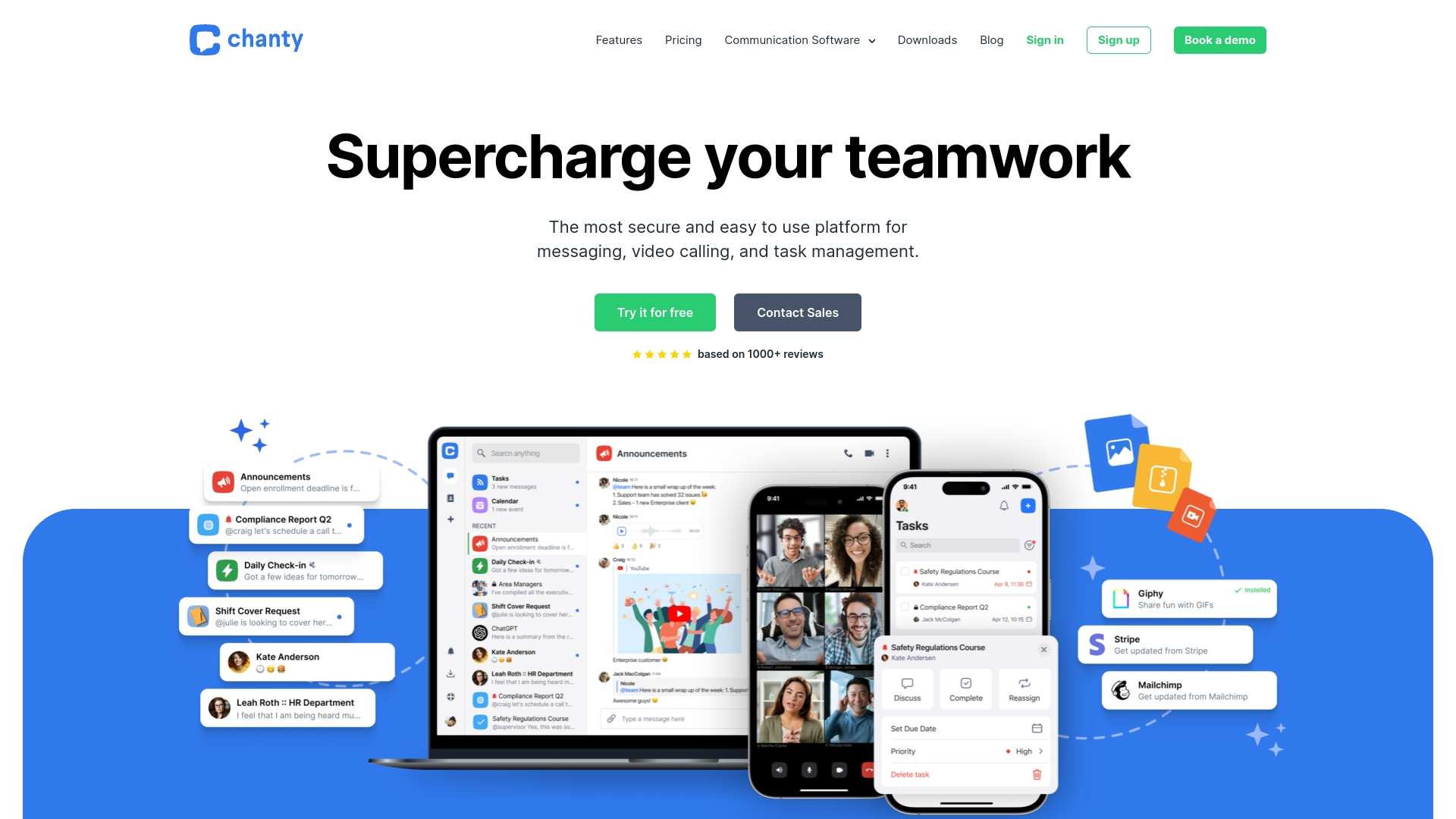
Chanty simplifies collaboration by blending communication and task management into one seamless experience. With its straightforward design, Chanty makes it easy to organize conversations, manage tasks, and connect your team—all without the complexity often found in other platforms. Its approachable interface is perfect for teams seeking a tool that prioritizes clarity and functionality, helping reduce friction and keep projects moving smoothly.
Best for Simplicity
Chanty’s strength lies in its ability to transform conversations into action. By integrating task management directly into its chat environment, it eliminates the need to jump between apps, allowing teams to stay focused and productive. The built-in Kanban board provides an intuitive way to visualize progress, while features like voice messages and screen sharing enable effortless communication. Whether your team is starting small with its free plan or scaling up with more advanced tools, Chanty keeps everything organized and accessible.
Key Features
- Transform chat into tasks with ease: Assign and track tasks directly from conversations, ensuring nothing falls through the cracks.
- Collaborate visually with screen sharing: Make training or project discussions more dynamic by sharing your screen in real time.
- Communicate flexibly with voice tools: Send quick voice messages or hold audio calls to stay connected during busy days.
- Accessible free plan with room to grow: Start with essential features for up to 5 team members and upgrade as your needs expand.
5. Flock

Flock brings clarity to team communication by combining simplicity with structure. Designed to help teams navigate conversations with ease, Flock uses channels, file sharing, and task management to create a seamless collaboration experience. It’s an intuitive solution for programs that need to keep discussions organized and actionable, all in one place.
Best for Structured Communication
Flock stands out for its clean interface and straightforward approach, offering tools that focus on communication and alignment without unnecessary complexity. Teams can quickly connect, share ideas, and move from discussion to action without friction. For smaller-scale operations or those just starting out, the free plan offers a solid foundation, while more advanced features are available for growing teams. However, its integration options are more limited compared to platforms like Slack or Microsoft Teams, which may impact businesses with more complex workflows.
Key Features
- Email list integration: Combine email updates with Flock’s channels, streamlining communication across platforms without extra effort.
- Collaboration tools: Use built-in features like polls, notes, and shared to-dos to keep teams aligned and engaged on tasks.
- Simple interface with a free option: Perfect for small groups or learning programs exploring digital communication tools.
- Fewer integrations: While it offers the essentials, Flock’s integration ecosystem might not meet the needs of teams relying on diverse external tools.
6. Twist
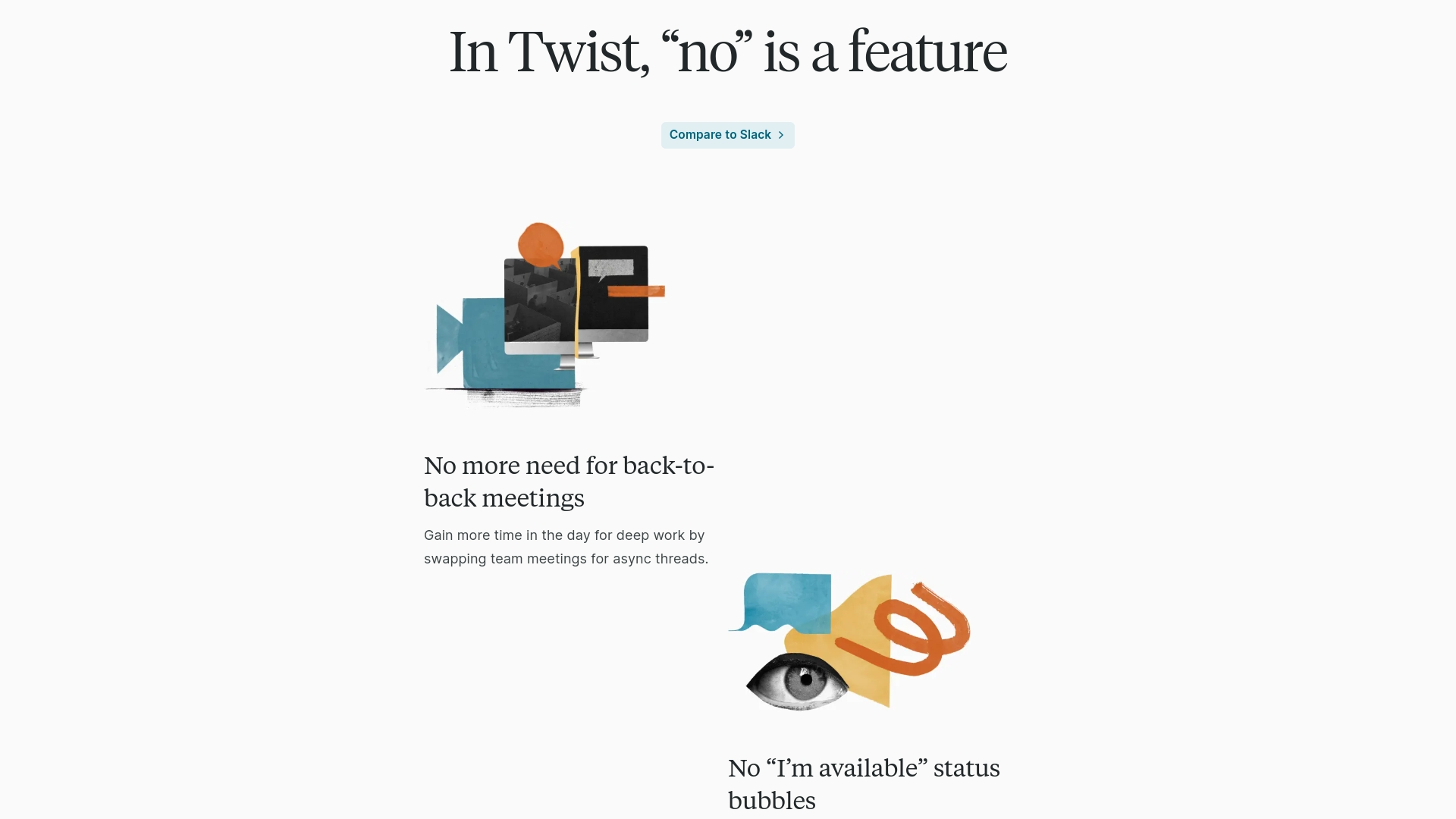
Twist takes a fresh approach to team communication by prioritizing thoughtful, organized interactions over constant chatter. Its design revolves around asynchronous collaboration, offering a structured system that encourages focus and clarity. For those managing learning programs or team training, Twist provides a space where discussions stay on-topic and easy to revisit, eliminating the distractions of more immediate, real-time tools.
Best for Threaded Conversations
Twist excels at turning fragmented conversations into cohesive, accessible threads. With its email-like inbox, you can catch up on updates at your own pace—no pressure to stay constantly “online.” This thoughtful structure ensures that every topic has a dedicated space, fostering deeper collaboration and reducing the stress of sifting through endless chat streams. While Twist doesn’t focus on video conferencing tools, its ability to create a calm, distraction-free environment makes it an excellent choice for teams focused on asynchronous learning and productivity.
Key Features
- Email-like inbox for catching up thoughtfully: Important updates are easy to find, and you can engage when it suits your schedule.
- Threads that organize discussions by topic: Maintain clarity and keep conversations focused on what matters most.
- Fewer distractions for meaningful work: Notifications are designed to reduce interruptions and support concentrated effort.
- Limited video conferencing tools: While great for written collaboration, it’s best paired with other platforms for live discussions.
7. Basecamp
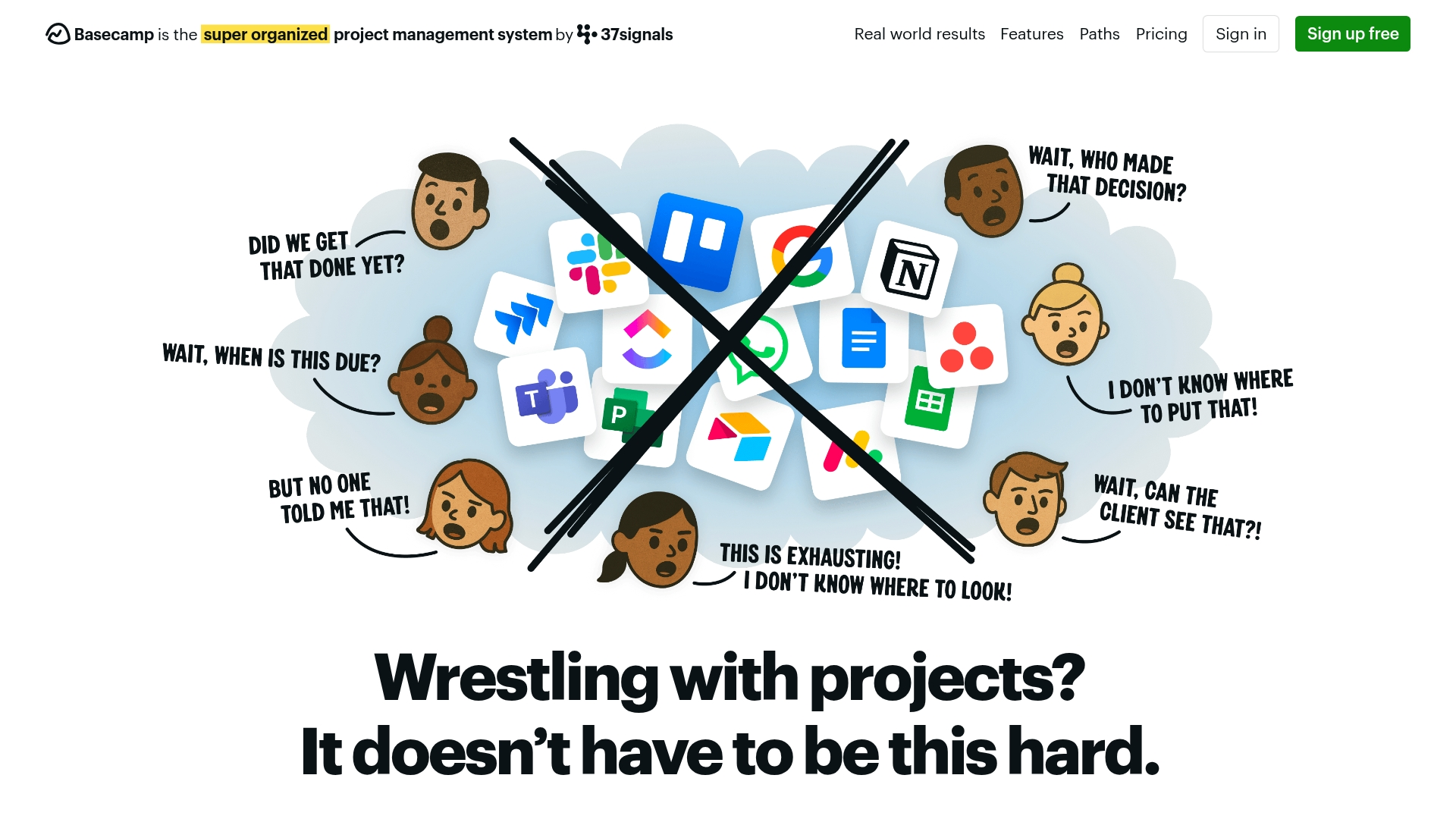
Basecamp brings clarity to collaborative training by combining project management and team communication in one cohesive platform. It’s designed to streamline how work gets done, ensuring every discussion, task, and deadline stays organized. For teams running project-oriented learning programs, Basecamp’s simplicity removes barriers to collaboration, allowing participants to focus on execution rather than juggling tools.
Best for Project-Oriented Training
Basecamp thrives in environments where teamwork and accountability are key. Its message boards, to-do lists, and file storage create a structured space for group learning, while its intuitive interface ensures that everyone stays aligned. However, its focus on task management means it lacks the advanced learning design features—like AI-powered content personalization—that platforms like Disco provide for training at scale.
Key Features
- Message boards, to-do lists, and docs in one place: Everything teams need to stay productive is centralized, minimizing distractions.
- Centralized communications for group assignments: Teams can share updates, assign tasks, and track progress without switching platforms.
- Simple, flat monthly fee: The Pro Unlimited plan offers predictable pricing, making it easy to budget for growing teams.
- Lacks specialized learning modules: While effective for managing projects, Basecamp doesn’t support curriculum creation or AI-driven insights.
8. Workplace by Meta
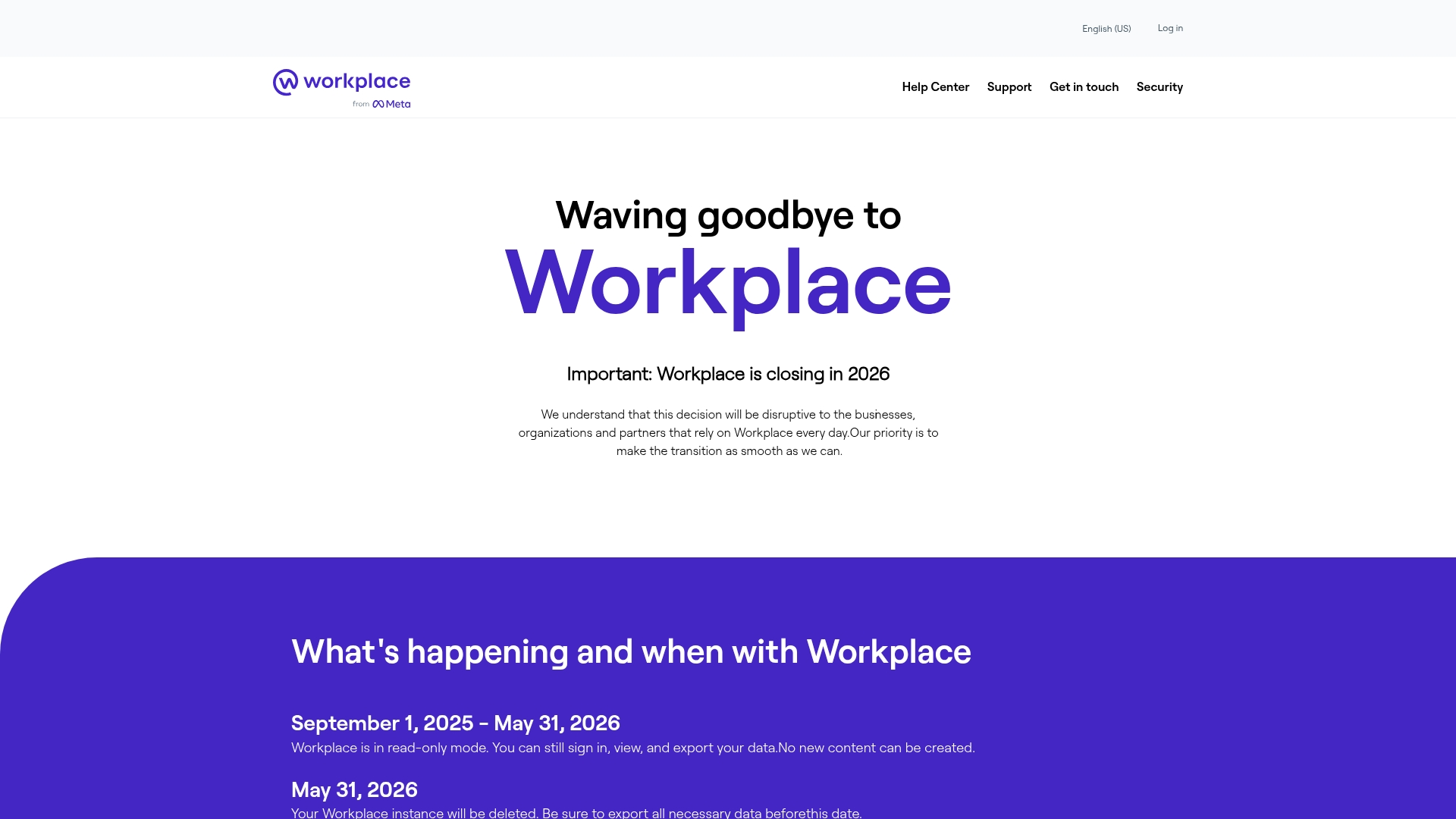
Workplace by Meta introduces a familiar, social approach to corporate communication. Modeled after Facebook’s interface, it creates an environment where team updates, collaboration, and feedback feel natural and intuitive. This design bridges the gap between personal and professional communication, making it easier for teams to stay connected.
Best for Familiar Social Media Style
Workplace thrives on simplicity, leveraging a news feed structure to deliver updates and announcements in a way that feels second-nature. Its chat features, live video streaming, and integration options add depth to collaboration, while groups create spaces for focused discussions. However, the ad-supported free tier might not align with teams looking for a more polished, distraction-free experience.
Key Features
- News feed structure for updates and announcements: A centralized way to keep everyone in the loop.
- Live video streaming: Host interactive sessions or company-wide meetings effortlessly.
- Chats, groups, and integrations: Tools that streamline communication and fit into everyday workflows.
- Ad-supported environment for free tiers: Cost-effective but less seamless for professional settings.
9. Rocket.Chat
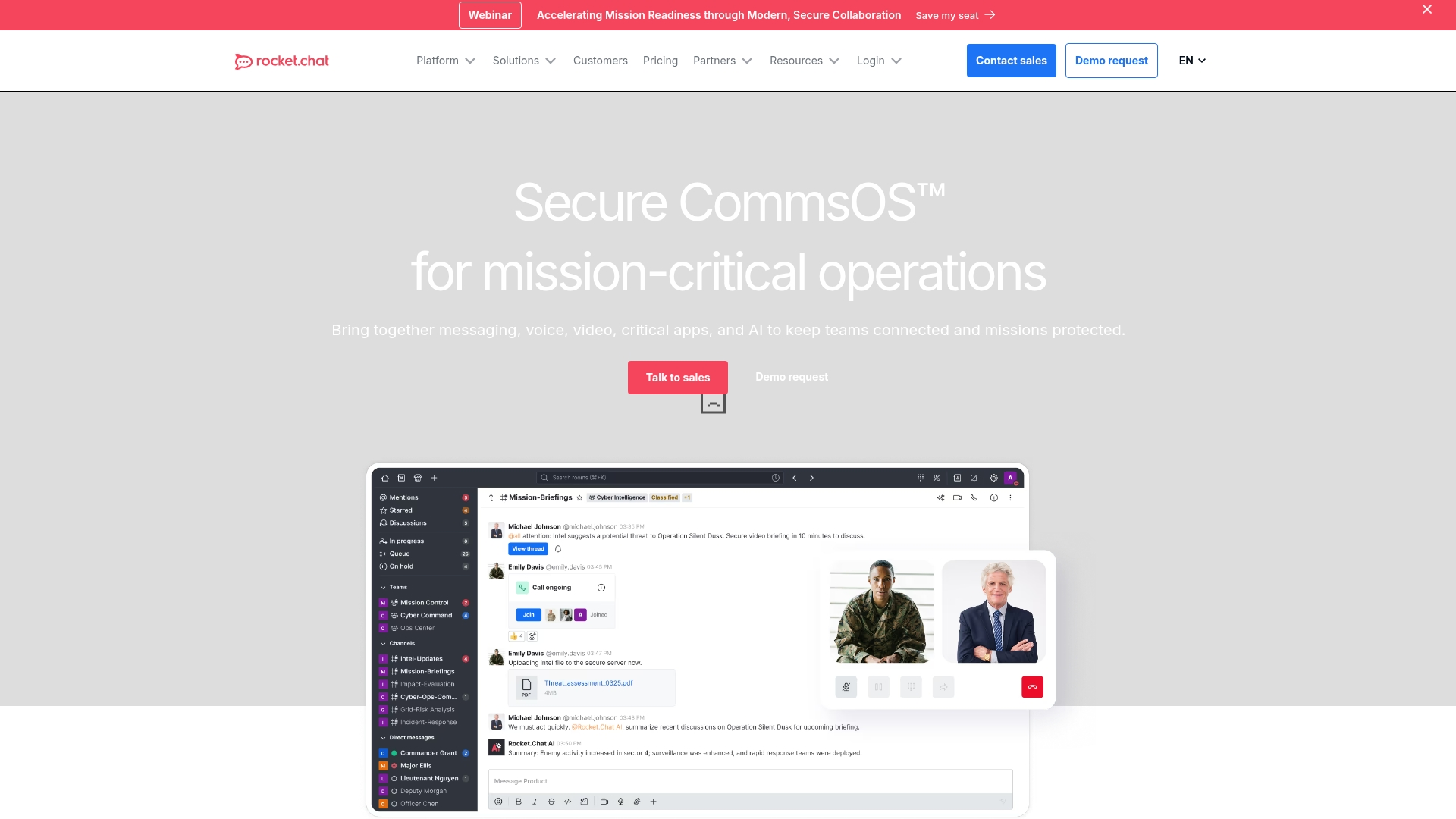
Rocket.Chat stands out as a platform designed for organizations that value flexibility and control in their communication tools. With its open-source foundation, Rocket.Chat gives teams the autonomy to self-host and customize their workspace to align with their specific goals. For businesses operating in environments where compliance and security are non-negotiable, this level of customization ensures that every interaction is tailored and secure.
Best for Open-Source Flexibility
Rocket.Chat transforms collaboration into a highly adaptable experience. Its robust offering includes messaging, video conferencing, and screen sharing, allowing teams to communicate effectively across contexts and formats. The platform’s permission system ensures that sensitive information stays protected, giving administrators the ability to define access down to the smallest detail. While its open-source nature unlocks endless customization possibilities, it does require a level of technical expertise to set up and maintain—a factor worth considering for smaller teams without dedicated IT resources.
Key Features
- Data ownership: Control how and where your data is stored, ensuring alignment with organizational policies and regulatory requirements.
- Video conferencing and screen sharing: Foster real-time collaboration in training sessions or team discussions.
- Rich permission system: Fine-tune access levels to maintain organizational security and clarity.
- Steep learning curve for setup and maintenance: Optimizing the platform requires technical know-how, making it better suited for teams with IT capabilities.
10. Mattermost
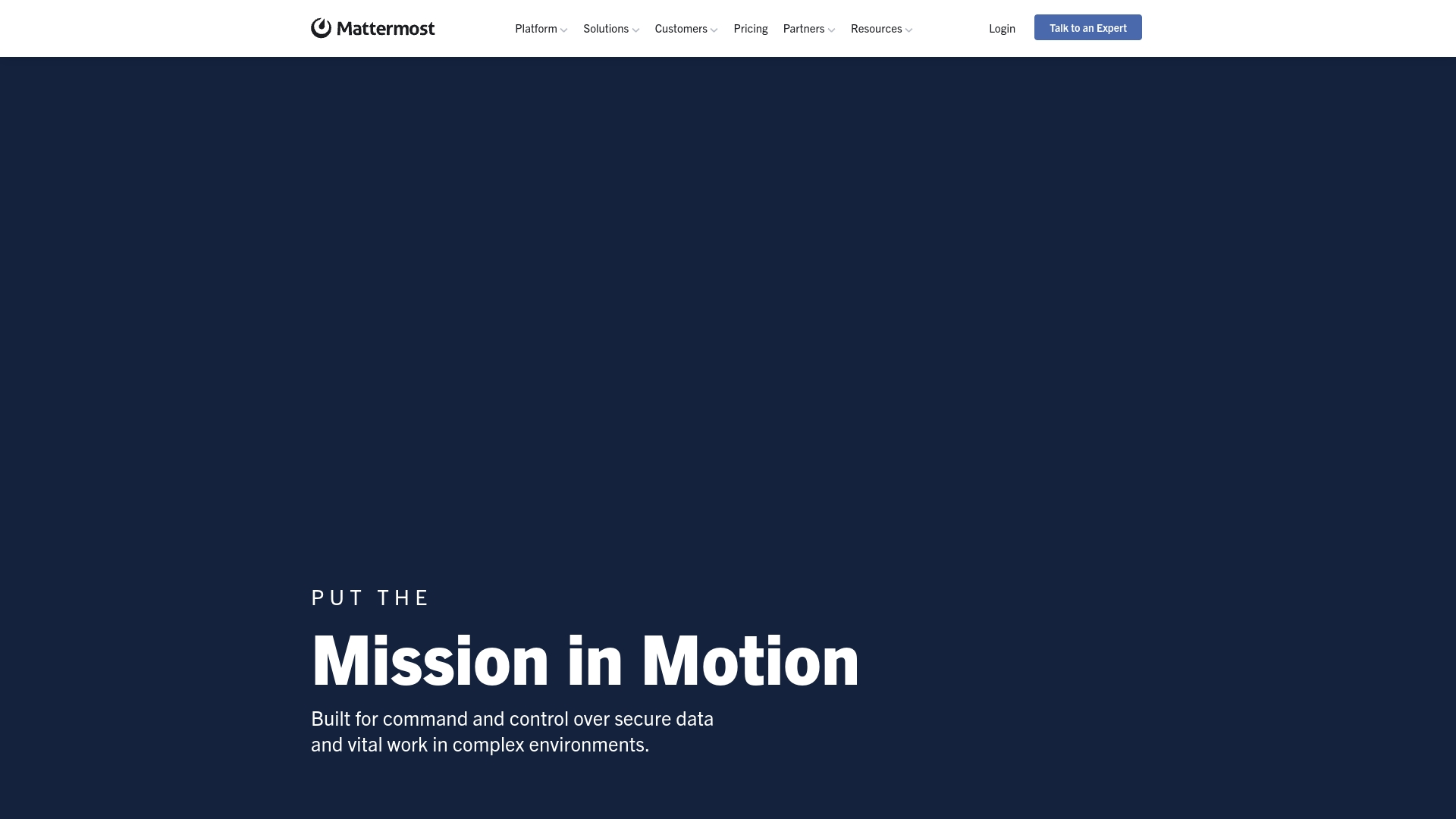
Mattermost offers a secure, self-hosted solution that prioritizes privacy and control—perfect for organizations navigating regulatory requirements or managing sensitive data. Its design caters to teams that need a highly customizable platform to structure workflows without sacrificing security. Mattermost empowers organizations to maintain complete ownership of their data while fostering collaboration tailored to their unique needs.
Best for Secure Self-Hosting
For teams working in regulated industries or on mission-critical initiatives, Mattermost provides the infrastructure to ensure secure communication and workflow management. The platform’s encrypted channels, role-based permissions, and flexibility to build custom plug-ins make it a standout for organizations that value control and adaptability. While its rich feature set is impressive, Mattermost’s self-hosted nature can demand greater technical expertise, which might present a challenge for less tech-savvy teams.
Key Features
- Encrypted communications: Safeguard every conversation with end-to-end encryption.
- Role-based permissions: Manage access with precision to secure sensitive information.
- Custom plug-ins for advanced training workflows: Tailor the platform to align with organizational goals using its plugin framework.
- Less beginner-friendly than managed solutions: A steeper learning curve for setup and maintenance makes it better suited for teams with technical resources.
Moving Forward
Choosing the right platform for your community training isn’t just about features—it’s about finding a partner that aligns with your vision. Platforms like Disco, with its AI-first approach to learning design and engagement, offer tools to streamline operations while scaling meaningful, branded experiences. Others may focus on specific needs, like gamification or video-first interactions. The key is identifying what matters most to your learners and your goals.
Trialing multiple platforms can be an effective way to see how well each one supports your unique needs. For those looking to integrate intelligent tools into their programs, Disco offers a distinctive blend of learning, community, and automation. Book a Demo to experience how Disco can simplify and elevate your program delivery.










